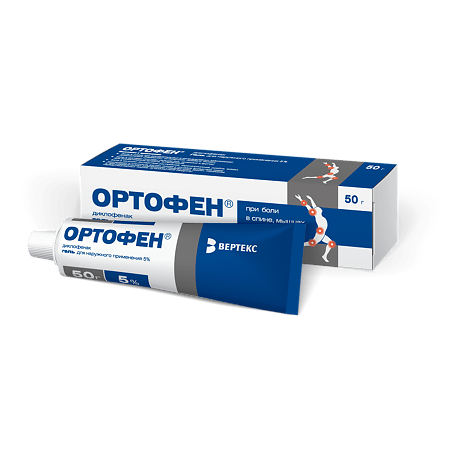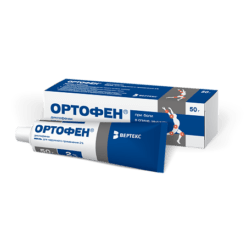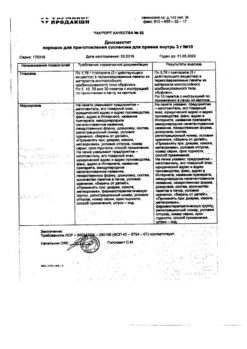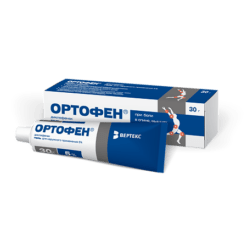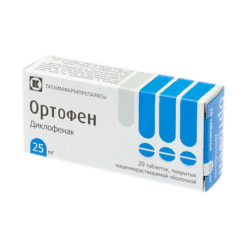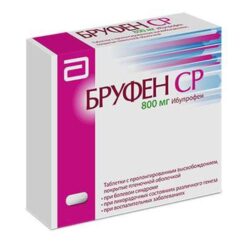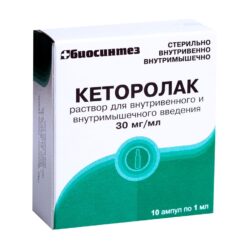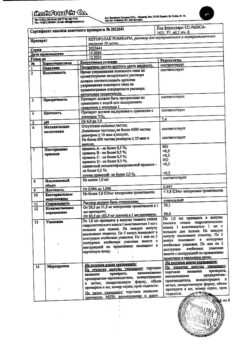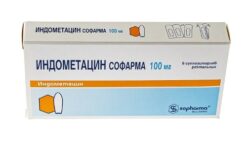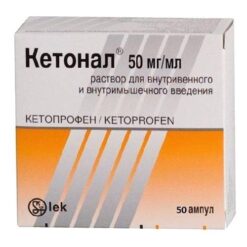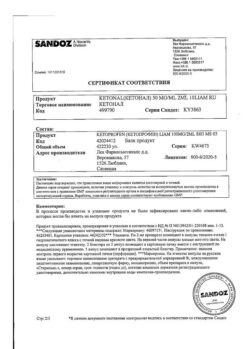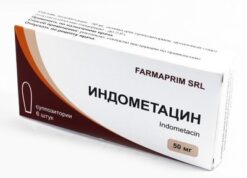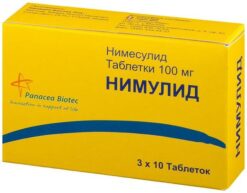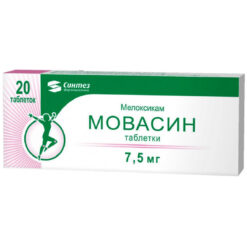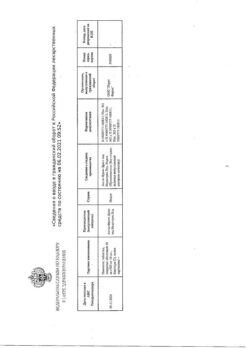No products in the cart.
Orthofen, gel 5% 50 g
€8.52 €7.46
Description
Ortofen is a non-steroidal anti-inflammatory drug (NSAID), a derivative of phenylacetic acid. It has a pronounced anti-inflammatory, analgesic and moderate antipyretic effect. The mechanism of action is associated with inhibition of COX activity – the main enzyme of arachidonic acid metabolism, which is a precursor of prostaglandins that play a major role in the pathogenesis of inflammation, pain and fever. Analgesic effect is caused by two mechanisms: peripheral (indirectly, through inhibition of prostaglandin synthesis) and central (due to inhibition of prostaglandin synthesis in central and peripheral nervous system).
Inhibits the synthesis of proteoglycan in cartilage.
In rheumatic diseases, it reduces pain in the joints at rest and on movement, as well as morning stiffness and joint swelling, helps increase range of motion. It reduces post-traumatic and post-operative pain, as well as inflammatory swelling.
Inhibits platelet aggregation. With long-term use it has a desensitizing effect.
When used topically in ophthalmology, it reduces swelling and pain in inflammatory processes of non-infectious etiology.
Pharmacokinetics
After oral administration it is absorbed from the gastrointestinal tract. Food intake slows down the rate of absorption; the degree of absorption does not change. When rectal administration absorption is slower. It does not cumulate. Permeates into the synovial fluid. It is largely metabolized to form several metabolites, two of which are pharmacologically active, but to a lesser extent than diclofenac. Approximately 60% of the dose is excreted as metabolites by the kidneys, less than 1% is excreted unchanged in the urine, the rest is excreted as metabolites in the bile.
Indications
Indications
Active ingredient
Active ingredient
Composition
Composition
Active substance:
diclofenac
How to take, the dosage
How to take, the dosage
Outwardly, 2-4 g of the ointment is applied in a thin layer on the painful area 3-4 times a day.
The maximum daily dose is 8 g. The course (individual) is 1-14 days.
Interaction
Interaction
When concomitant use of antihypertensive drugs with Orthofen, their effect may be weakened.
There have been single reports of convulsions in patients taking concomitant use of NSAIDs and antibacterial quinolone drugs.
Concomitant use with glucocorticosteroids (GCS) increases the risk of digestive side effects.
Concomitant use of diuretics may decrease the diuretic effect. Concomitant use with potassium-saving diuretics may increase the blood potassium concentration.
Concomitant use with other NSAIDs may increase the risk of side effects.
There have been reports of hypoglycemia or hyperglycemia in patients with diabetes mellitus who have used Orthofen concomitantly with hypoglycemic drugs.
Concomitant use with acetylsalicylic acid may decrease the plasma concentration of diclofenac.
While in clinical trials it has not been established the effect of diclofenac on the effect of anticoagulants, there have been individual cases of bleeding when concomitant use of diclofenac and warfarin.
When used concomitantly the concentration of digoxin, lithium and phenytoin in blood plasma may increase.
Gastrointestinal absorption of diclofenac is decreased with concomitant use with colestiramine, and to a lesser extent with colestipol.
Concomitant use may increase plasma concentrations of methotrexate and increase its toxicity.
Concomitant use of Orthofen may not affect the bioavailability of morphine, but the concentration of the active metabolite of morphine may remain elevated in the presence of diclofenac, which increases the risk of side effects of morphine metabolite, including respiratory depression.
In concomitant use with pentazocine a case of large convulsive seizure has been described; with rifampicin – possible decrease of diclofenac concentration in blood plasma; with ceftriaxone – excretion of ceftriaxone with bile increases; with cyclosporine – possible increase of nephrotoxicity of cyclosporine.
Contraindications
Contraindications
Hypersensitivity, including to other NSAIDs. NSAIDs; gastric and duodenal ulcer in the acute phase; allergic asthma, rhinitis, urticaria, children under 6 years of age.
Side effects
Side effects
Pain in the epigastric region, belching, nausea, vomiting, diarrhea, dizziness, headache, skin allergic reactions, increased BP.
Pregnancy use
Pregnancy use
It is contraindicated (especially in the III trimester of pregnancy).
Breastfeeding mothers should stop breastfeeding during treatment.
Similarities
Similarities
Additional information
| Shelf life | 2 years |
|---|---|
| Conditions of storage | At a temperature not exceeding 25 °C. |
| Manufacturer | Vertex, Russia |
| Medication form | gel for external use |
| Brand | Vertex |
Other forms…
Related products
Buy Orthofen, gel 5% 50 g with delivery to USA, UK, Europe and over 120 other countries.

